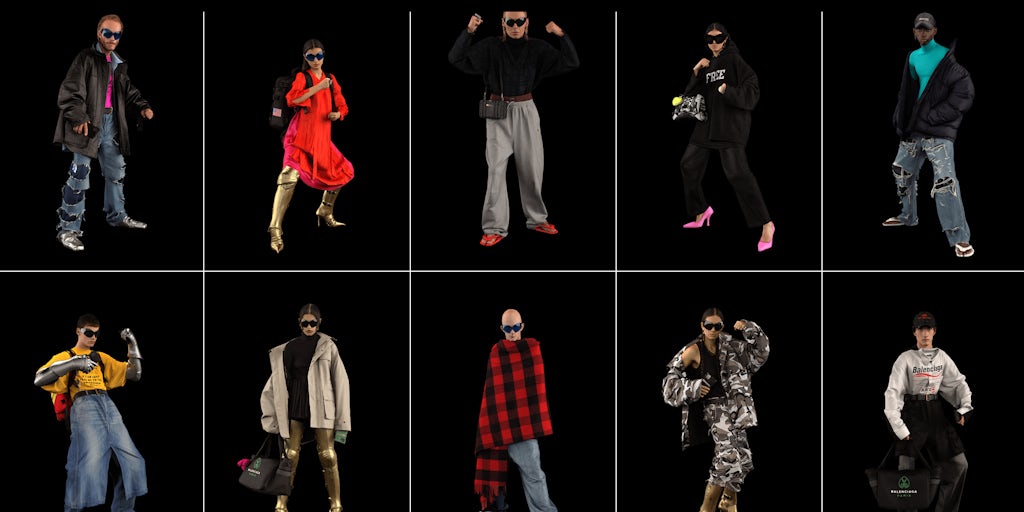The renaissance of the bar soap
The humble bar soap — once the ire and butt-of-the-joke among the more relevant and innovative beauty products — is having a renaissance moment.
Over the past year, indie brands including Black Opal, Glossier, Henry Rose, Ursa Major and Grove Collaborative have launched solid bar soaps. Kline’s Cosmetics & Toiletries USA report found that bar soaps had a banner year in 2020, recording a sales growth of 6.5% after seeing steady declines over the last five years. While the report notes that this growth was mainly due to the surge in need for hand and body hygiene, bar soap has also gone from representing a fuddy-duddy product lacking sophistication to being something more fun and worldly. Heritage brands like Erno Laszlo, Irish Spring, Dial and Dove have evolved or expanded their brands to reach younger customers looking for eco-friendly and clean products. Even hair-care brand Garnier introduced solid shampoo bars in June, under the umbrella of sustainability.
“When you look at today’s trends, pretty much everything has been influenced by Covid-19. Covid has transformed how people think about hygiene. It used to be about being clean, and now it is a way of keeping you and your loved ones safe and healthy,” said Greg Ross, vp of skin cleansing at Unilever. “There’s also the self-care trend that had existed before Covid-19 but accelerated during it. We’ve seen that play a big role in the bar soap category.”
Based off these trends, Dove launched bar soaps with oatmeal for calming and restoring dry skin, a purifying detox soap with green clay and a soothing hypoallergenic bar soap, all in 2021. Additionally, in June, Dove launched an anti-bacterial series of bar soaps. Throughout 2020, Dove did not pull back on its advertising investments like most other brands, said Ross. Instead, Dove broadened its communications beyond strict promotions of its own products to educate customers on how to properly rinse their hands. As a mass brand, Dove advertises via print publications, and OTT and linear TV ads, as well as out-of-home and digital ads. Ross declined to cite overall investments or growth in sales.
Debi Theis, Henry Rose president, said that the idea for launching a solid bar soap came from a product development meeting with the company’s six employees and founder Michelle Pfeiffer. While everyone was discussing products, there was an air of embarrassment as everyone quietly admitted that they use bar soaps, she said. Henry Rose launched a 6-ounce body bar soap in early June for $30, which uses 100% recyclable paper packaging.
“As we started getting into product development and working on the next new thing for us, bar soap was [a perfect product] for our values on the environment and sustainability,” said Theis. “With body washes, we had thought ‘We could do refillable or we could do an aluminum can.’ But that’s a lot of work for some people. Most body washes are [packaged] in plastic, but we tried to stay away from that.”
Though sustainability was a motivator for creating a bar soap, the brand’s primary messaging is on the performance of the product and its ability to offer a moisturizing lather even as a clean product. Theis said the launch was timed ahead of Father’s Day on June 20, as the expectation was that this would be a popular men’s product. Henry Rose’s soap features its Jake’s House scent, which is the same as its best-selling fragrance.
Better scent profiles are one reason the bar soap category is more desirable now, as it’s viewed as an elevated product. Redoux, the 1-year-old buzzy beauty brand that received Glossier grant money, is centered on a scent story, too, though it also aims to be an easy-to-use and empathic brand, said Asia Grant, Redoux co-founder. Using less plastic was also a primary desire for Redoux, she said.
“In our initial research, we found that people were looking for a way to [reduce] their plastic waste footprint and make more intentional purchases of products that make them feel good but are not filling landfills. [People] want products that use ingredients they understand,” Grant said.
Redoux’s core customer group is 25- to 36-years-old and is 60% women and 40% men. Redoux is sold through The RealReal, Reformation and Goop, and the average household income of customers is $70,000-$120,000. Grant said that people typically buy a single $16 bar soap and that 60% of customers make repeat purchases, often upgrading to the $36 three-pack of bar soap.
Grant does not anticipate expanding Redoux to shampoo bars or other types of solid products. Meanwhile. Theis said she believes there is a lot of potential in the category for Henry Rose and that solid bar soaps could gain a “cool factor” to them. Ross declined to share future Dove product launches but said the brand is always looking at customer trends and potential product innovations.
“There has been a bit of a renaissance where we’ve seen bar soap come back into favor with the younger generation,” said Ross. “It could be sustainability perceptions, but it could also be driven by more variety in the [product offerings] and the experience, as well.”
Reading List
Inside our coverage:
The beauty industry wants to redecorate for you.
Black-owned beauty goes mass.
Hyram launches his own brand.
Self-care was this year’s Father’s Day trend.
What’s we’re reading:
How to return to physical marketing.
TikTok’s latest marketing updates.
The return of makeup.


:quality(70):focal(1012x625:1022x635)/cloudfront-eu-central-1.images.arcpublishing.com/businessoffashion/IKXTDJBQPVGVPM7PE4PSYY4BLM.jpg)


